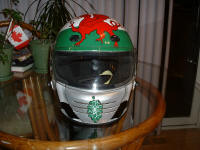Another skippy grad here. A little confused about all the different responses so check me out here to help clarify.
The non-sequential skippy cars preferred "double-clutching" and "rev-matching" during downshifts. Double-clutching is where you depress the clutch pedal twice for each lower gear selection, the first time to get the car out of gear, while in neutral the revs are "matched" for the selected lower gear, then the clutch is depressed again to finally select the lower gear. Since this is typically done during braking, the "heel and toe" language represents the simultaneous application of brake pedal and gas pedal.
I say "preferred" because during my school I regularly failed to use the clutch at all during downshifts. Lifting off the gas unloaded the trans so you could select neutral, then a decent blip getting the revs just a tad higher than the lower gear would let you slip the shifter in. Same with upshifts but of course letting the revs drop. Of course, when I got it wrong, everybody knew it

As for "production" cars with synchronized trans, matching engine revs to the lower gear while the clutch is depressed does nothing to save or help the synchros. All that does is disconnect the flywheel from the input shaft; the trans still has to spin the input shaft to the higher revs using the synchros. Matching the engine revs before you release the clutch just smooths the downshift. However, double-clutching will help reduce trans wear since the engine would spin the input shaft when you blip the throttle while in neutral, clutch pedal released. YMMV
I'm a left foot braking, double-clutching, heel and toe'er

And sometimes I skip a gear on the downshift.
Feel free to critique...my technique:
http://www.youtube.com/watch?v=KIs0-ILjI1U
http://www.youtube.com/watch?v=FuFWAx-huuA
Oh yeah, as for foot placement, I've done it both ways depending on pedal layout. Bottom hinged pedals I use the heel on the brake, toe on the gas. Top hinged is typically more of the "roll" than a true HNT. Unless the pedal goes to the floor

Then it's usually some contortion to get any part of the foot to blip the throttle.
Thanks,
Michael






